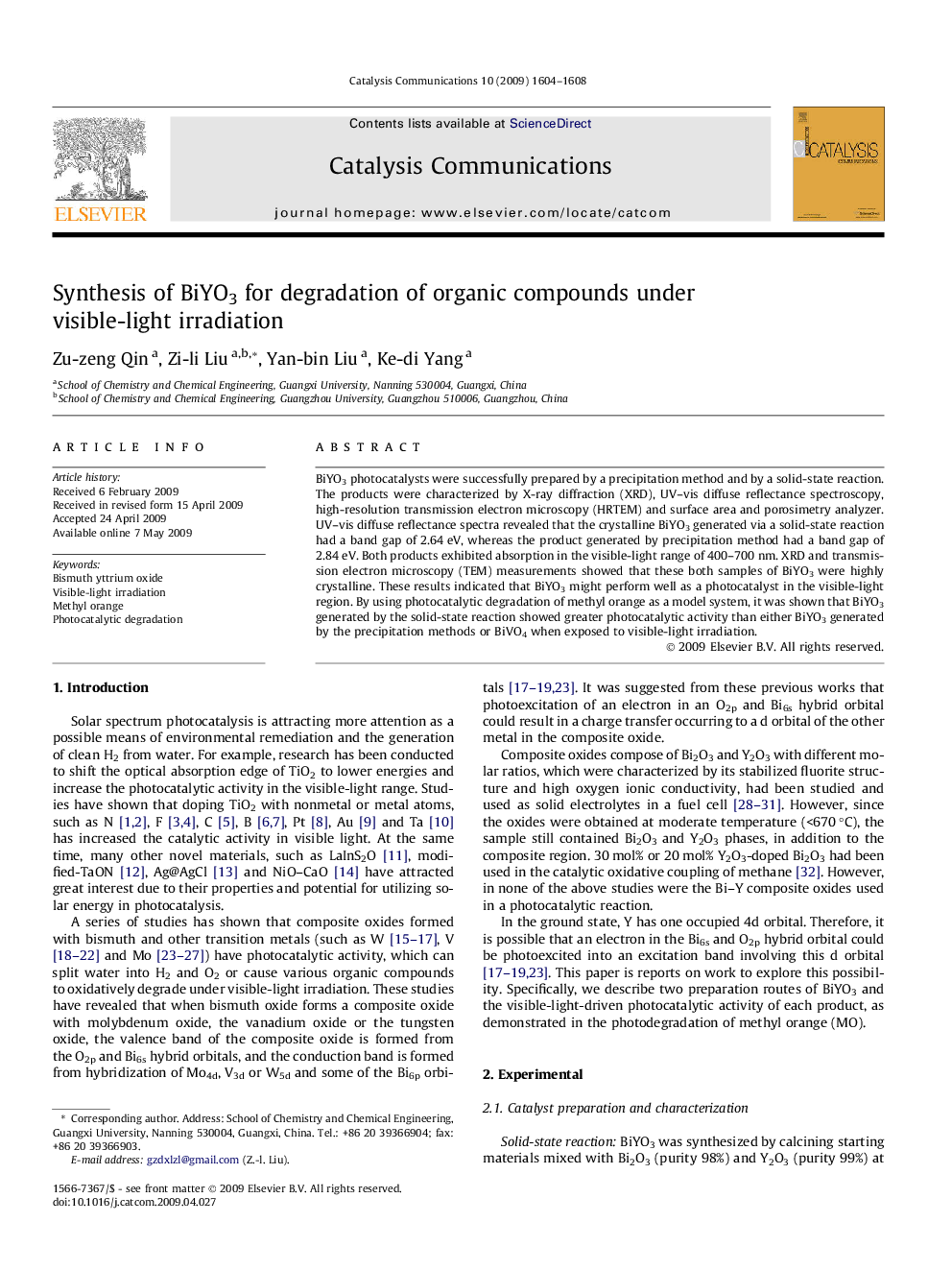| Article ID | Journal | Published Year | Pages | File Type |
|---|---|---|---|---|
| 52696 | Catalysis Communications | 2009 | 5 Pages |
BiYO3 photocatalysts were successfully prepared by a precipitation method and by a solid-state reaction. The products were characterized by X-ray diffraction (XRD), UV–vis diffuse reflectance spectroscopy, high-resolution transmission electron microscopy (HRTEM) and surface area and porosimetry analyzer. UV–vis diffuse reflectance spectra revealed that the crystalline BiYO3 generated via a solid-state reaction had a band gap of 2.64 eV, whereas the product generated by precipitation method had a band gap of 2.84 eV. Both products exhibited absorption in the visible-light range of 400–700 nm. XRD and transmission electron microscopy (TEM) measurements showed that these both samples of BiYO3 were highly crystalline. These results indicated that BiYO3 might perform well as a photocatalyst in the visible-light region. By using photocatalytic degradation of methyl orange as a model system, it was shown that BiYO3 generated by the solid-state reaction showed greater photocatalytic activity than either BiYO3 generated by the precipitation methods or BiVO4 when exposed to visible-light irradiation.
